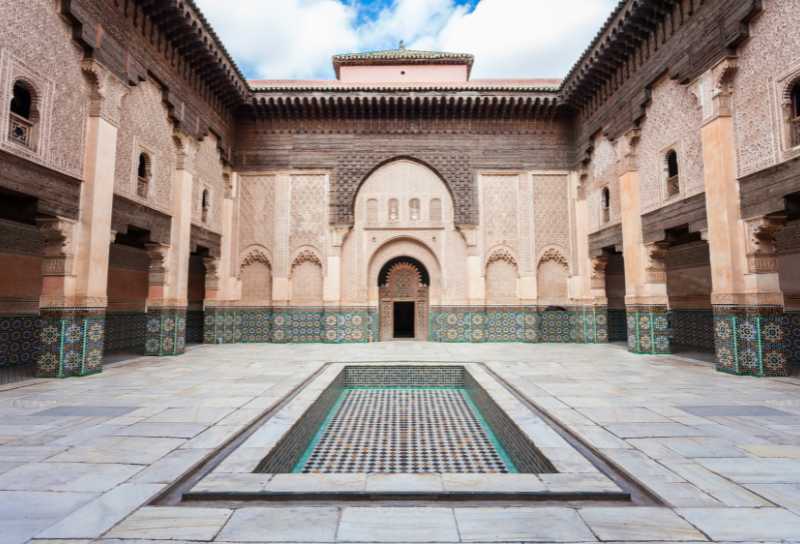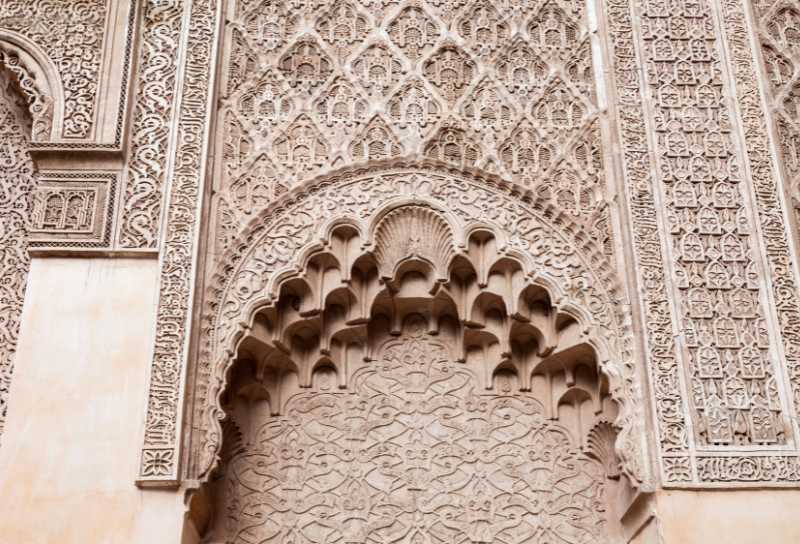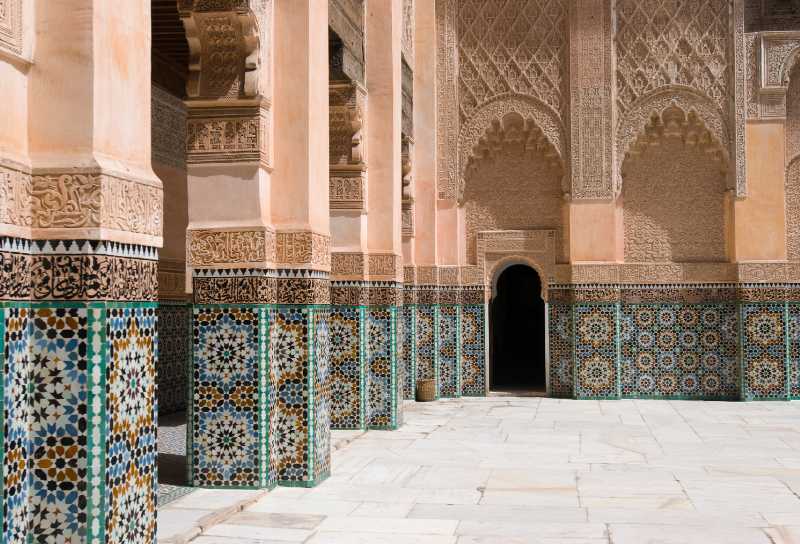
In the heart of the ancient medina of Marrakech, Morocco, lies a hidden gem that embodies the rich history and architectural splendor of the Islamic world.
The Ben Youssef Madrasa, also known as the Medersa Ben Youssef, stands as a testament to the enduring legacy of Islamic scholarship and architectural brilliance.
This informative article delves into the history, architecture, and cultural significance of this iconic madrasa.
A Historical Overview
The Ben Youssef Madrasa, constructed in the 14th century, represents one of the most remarkable examples of Islamic architecture in North Africa.
It was named after the Almoravid sultan Ali ibn Yusuf, under whose reign it was founded.
Originally established as an Islamic college for theological and legal studies, it attracted scholars and students from all over the Islamic world.
The madrasa played a crucial role in the intellectual and spiritual development of the region for centuries, offering a place for the study of the Quran, Hadith, theology, and Islamic jurisprudence.
It was also a center for the exchange of ideas and the propagation of Islamic knowledge.
Architectural Grandeur

The architectural grandeur of Ben Youssef Madrasa is nothing short of breathtaking. Its design is an intricate fusion of Islamic geometric patterns, zellige tilework, stucco plasterwork, and cedar woodcarvings, all of which are exemplars of Moroccan craftsmanship and artistic mastery.
- Courtyard: The central courtyard is a masterpiece in itself. Surrounded by a two-story gallery of rooms, this open-air space features a reflecting pool at its center, offering a sense of serenity and coolness. The courtyard is adorned with stunning mosaics and calligraphic inscriptions.
- Stucco Decorations: The walls of the madrasa are decorated with intricate stucco plasterwork, showcasing geometric patterns, arabesques, and Quranic verses. The details in the stucco are awe-inspiring, reflecting the skills of the artisans who worked on them.
- Zellige Tilework: The use of zellige tilework, characterized by its small, colorful geometric tiles, adds a mosaic-like quality to the madrasa’s architecture. The tiles cover the walls, arches, and fountains, creating a mesmerizing visual experience.
- Cedar Woodcarvings: The madrasa’s wooden elements, such as the elaborately carved cedarwood screens and window frames, provide a warm and inviting contrast to the geometric patterns and mosaics. These intricate carvings often feature complex geometric and floral motifs.

Cultural Significance
Beyond its architectural splendor, the Ben Youssef Madrasa holds immense cultural and historical significance.
It stands as a symbol of the enduring legacy of Islamic scholarship in Morocco and the broader Islamic world.
The madrasa was a place where students, scholars, and spiritual seekers from diverse backgrounds could gather to engage in intellectual pursuits and deepen their understanding of Islam.
The madrasa’s library, though not as extensive as it once was, contained a significant collection of religious texts, contributing to the dissemination of knowledge in the region.
Its role as a center for religious education and enlightenment remains an integral part of Morocco’s cultural heritage.
Visiting Ben Youssef Madrasa
Practical Information: Medersa Ben Youssef Marrakech is conveniently located in the heart of the city and is open daily from 8 am to 7 pm.
An affordable entrance fee (40dhs, $4) allows access to this architectural wonder.
For a richer experience, consider hiring a local guide who can provide insights into its historical and architectural significance.
Tips for Travelers
- Visit in the early morning to avoid crowds and capture the best lighting for photographs.
- Wear comfortable shoes to explore the extensive complex.
- Take a moment to sit in the courtyard, absorb the tranquil ambiance, and appreciate the artistry.
In conclusion, Ben Youssef Madrasa in Marrakech, Morocco, is a living testament to the rich history and cultural heritage of the Islamic world.
Its remarkable architecture, historical significance, and role as a center for education make it a must-visit destination for anyone interested in the beauty and depth of Islamic civilization.